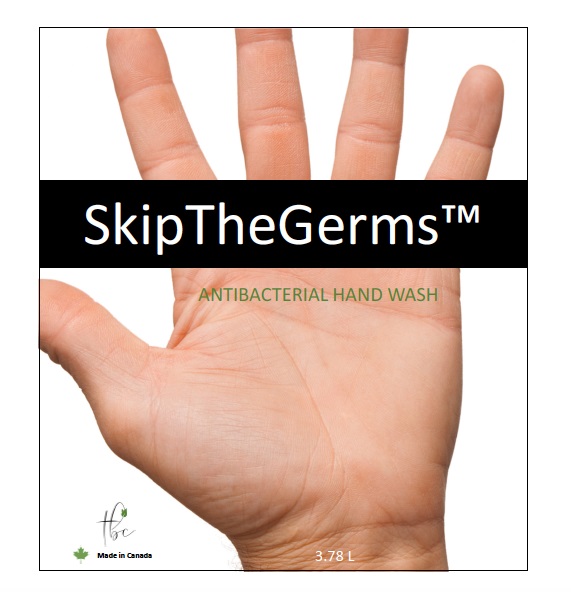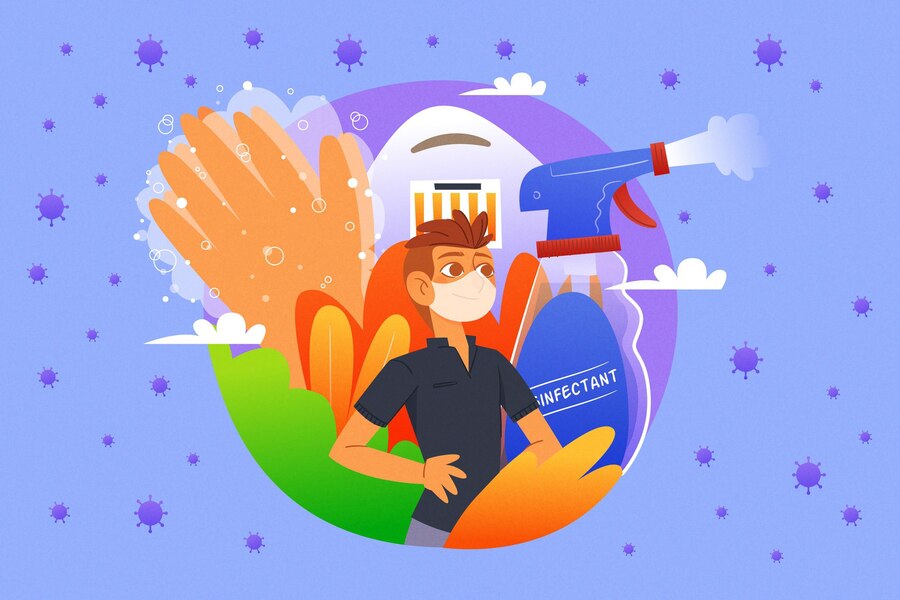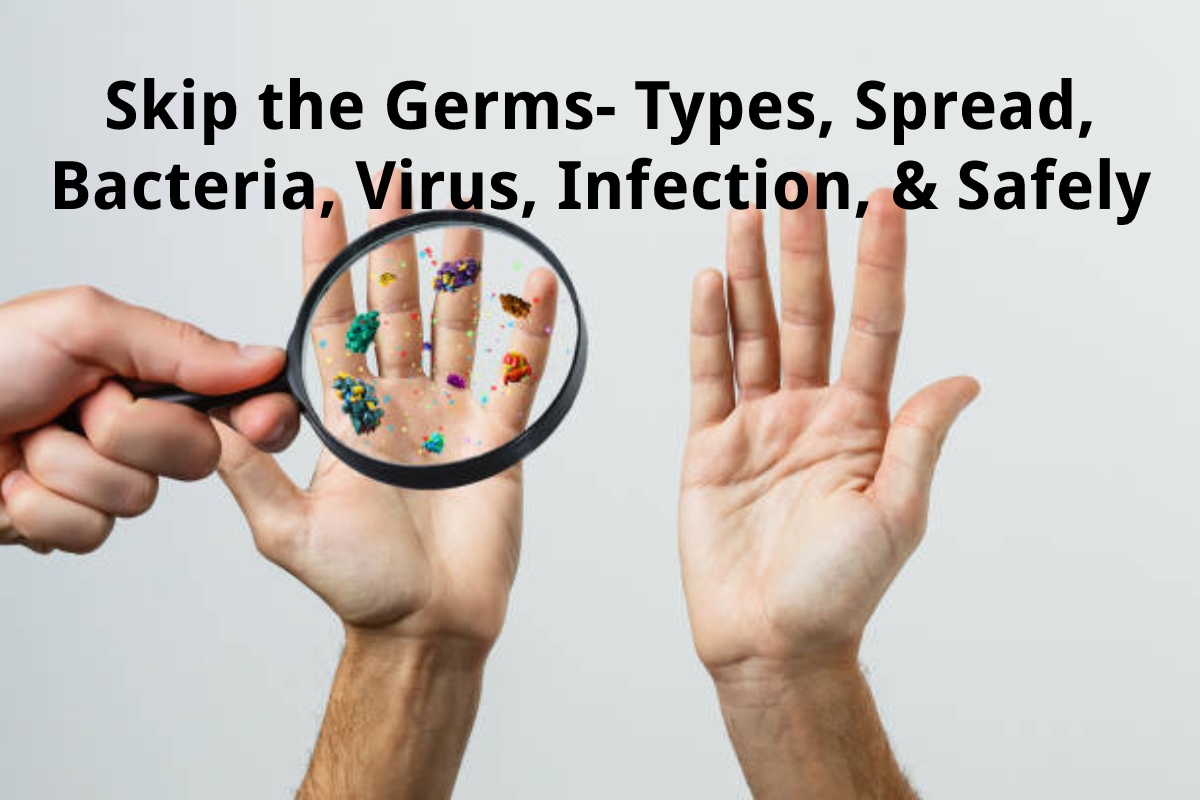Listen up, folks. We're diving deep into the world of germs—those tiny, invisible troublemakers that can ruin your day faster than you can say "sneeze." If you're tired of dealing with sniffles, sneezes, and the constant worry of picking up something nasty, it's time to learn how to skip the germs. This isn't just about avoiding illness; it's about taking control of your health in a world full of invisible threats.
Let's face it, germs are everywhere. They're on your phone, your keyboard, the doorknob you touched this morning, and even that coffee cup you borrowed from the office. But don’t panic yet. With the right strategies and a bit of awareness, you can outsmart those pesky little critters and keep yourself (and your loved ones) safe. This guide is all about empowering you to take charge.
So, whether you're a germaphobe looking for validation or someone who just wants to stay healthy, you've come to the right place. We're going to break down everything you need to know about skipping the germs, from the basics of hand hygiene to advanced tips for staying germ-free in public spaces. Let's get started!
Read also:Taron Egerton Gf The Inside Story Of Love Fame And Hollywood Romance
Table of Contents
- What Are Germs?
- Why Should You Skip the Germs?
- Biological Insight: Understanding Germs
- Germ Hotspots: Where Are They Lurking?
- Hand Hygiene: The First Line of Defense
- Tools to Help You Skip the Germs
- Skipping Germs at Work
- Travel Tips for Staying Germ-Free
- Creating a Germ-Free Home
- Final Thoughts: Take Charge of Your Health
What Are Germs?
Alright, let’s start with the basics. What exactly are germs? Well, they're microorganisms that can cause disease. Think of them as tiny invaders that sneak into your body and wreak havoc. There are different types of germs, including bacteria, viruses, fungi, and protozoa. Some are harmless, but others can make you really sick.
Here’s the thing: germs are super sneaky. They can survive on surfaces for hours, days, or even weeks. And they don’t need much to thrive. All they need is a little moisture and warmth, which is why your hands, kitchen counters, and even your toothbrush can become germ playgrounds.
Types of Germs You Should Know About
- Bacteria: These little guys can cause infections like strep throat and food poisoning.
- Viruses: Think flu, colds, and the infamous common cold virus. They’re highly contagious and love to spread.
- Fungi: Ever had athlete’s foot or a yeast infection? Yep, that’s fungi at work.
- Protozoa: These are less common but can still cause issues, especially in contaminated water.
So, now that you know what you're up against, let’s talk about why skipping the germs is so important.
Why Should You Skip the Germs?
Skipping the germs isn’t just about avoiding a runny nose or a sore throat. It’s about protecting your overall health and well-being. Germs can lead to serious illnesses, from the flu to more dangerous infections. And let’s not forget, staying germ-free can save you time, money, and a whole lot of hassle.
Imagine this: you’re feeling great, full of energy, and ready to take on the world. Then, BAM! A germ hits you, and suddenly you’re stuck in bed with a fever, chills, and zero motivation. Sounds rough, right? By learning how to skip the germs, you’re not only protecting yourself but also those around you. Because let’s be real, no one wants to be the person who spreads germs at the office or during family gatherings.
Biological Insight: Understanding Germs
Before we dive into the practical tips, let’s take a quick detour into the science behind germs. Understanding how they work can help you better protect yourself.
Read also:The Fascinating Life Of Tachibana A Journey Through Time And Culture
Germs are everywhere, but they don’t just float around aimlessly. They need a host to survive and reproduce. That’s why they love to hitch a ride on your hands, clothes, and even your food. Once inside your body, they can multiply rapidly and cause all sorts of trouble.
How Do Germs Spread?
Germs spread in a variety of ways, including:
- Direct Contact: Shaking hands, hugging, or even touching someone who’s sick.
- Indirect Contact: Touching surfaces that have been contaminated, like doorknobs or elevator buttons.
- Airborne Transmission: When someone coughs or sneezes, germs can travel through the air and land on you or surfaces nearby.
- Contaminated Food or Water: Eating or drinking something that’s been exposed to germs.
Now that you know how germs spread, let’s talk about where they like to hang out.
Germ Hotspots: Where Are They Lurking?
Germs love to hide in the most unexpected places. Here are some common germ hotspots you should be aware of:
- Your Phone: Yep, your beloved smartphone is a germ magnet. It’s constantly touching your face, ears, and lips, making it a prime spot for bacteria and viruses.
- Doorknobs and Handles: Think about how many people touch these every day. Gross, right?
- Toilets: No surprises here. Toilets are germ factories, but they’re not the only culprits in the bathroom.
- Kitchen Sponges: Those sponges you use to clean dishes? They’re probably dirtier than your toilet seat.
The good news is, once you know where germs like to hide, you can take steps to avoid them. Let’s move on to the most important weapon in your germ-fighting arsenal: hand hygiene.
Hand Hygiene: The First Line of Defense
Your hands are the main way germs enter your body. Think about it: you touch your face, eat with your hands, and shake hands with others. That’s why proper hand hygiene is crucial.
How to Wash Your Hands Properly:
- Wet your hands with clean, running water.
- Apply soap and lather up for at least 20 seconds. (Sing “Happy Birthday” twice if you need a timer.)
- Don’t forget to scrub between your fingers, under your nails, and the backs of your hands.
- Rinse thoroughly and dry with a clean towel.
If you don’t have access to soap and water, hand sanitizer is a great alternative. Just make sure it contains at least 60% alcohol.
Tools to Help You Skip the Germs
In today’s world, there are plenty of tools and products designed to help you stay germ-free. Here are a few of our favorites:
- Antibacterial Wipes: Perfect for cleaning surfaces on the go.
- Air Purifiers: These can help filter out airborne germs, especially in enclosed spaces.
- UV Sanitizers: Use these to disinfect your phone, keys, and other personal items.
- Face Masks: While not always necessary, they can be a great tool during flu season or in crowded areas.
Of course, no tool is foolproof. The best defense is still good old-fashioned hygiene and awareness.
Skipping Germs at Work
Let’s face it, the office can be a germ haven. Between shared keyboards, coffee machines, and those dreaded office birthday cakes, it’s easy to pick up something nasty. Here’s how to stay safe:
- Wipe down your workspace regularly with disinfectant wipes.
- Avoid sharing utensils, cups, or food with coworkers.
- Keep hand sanitizer at your desk and use it frequently.
- If you’re feeling unwell, stay home to avoid spreading germs to others.
And don’t forget, good communication with your coworkers can go a long way. Encourage everyone to practice good hygiene habits.
Travel Tips for Staying Germ-Free
Traveling can be a germ-filled adventure, especially on planes, trains, and buses. Here’s how to stay safe while on the go:
- Bring your own hand sanitizer and disinfectant wipes.
- Avoid touching your face, especially after touching public surfaces.
- Consider wearing a mask, especially during flu season.
- Choose window seats on planes, as they tend to have fewer germs than aisle seats.
Remember, travel doesn’t have to mean germ exposure. With a little preparation, you can enjoy your trip without worrying about getting sick.
Creating a Germ-Free Home
Your home should be your sanctuary, not a breeding ground for germs. Here’s how to keep it clean and safe:
- Regularly clean and disinfect high-touch surfaces like doorknobs, light switches, and remote controls.
- Wash your bedding and towels frequently, especially if someone in the house is sick.
- Invest in a good air purifier to keep the air clean.
- Teach your family members good hygiene habits, like washing their hands after using the bathroom.
A clean home is a healthy home. By taking these steps, you can create a germ-free environment for you and your loved ones.
Final Thoughts: Take Charge of Your Health
Skipping the germs isn’t just about avoiding illness; it’s about taking control of your health. By understanding how germs work, recognizing their hiding spots, and practicing good hygiene, you can protect yourself and those around you.
So, what’s next? Start implementing these tips today. Wash your hands, clean your space, and stay aware of your surroundings. And don’t forget to share this guide with your friends and family. The more people who know how to skip the germs, the healthier we all become.
Got any questions or tips of your own? Drop a comment below and let’s keep the conversation going. Together, we can make the world a little cleaner and healthier—one germ at a time!



